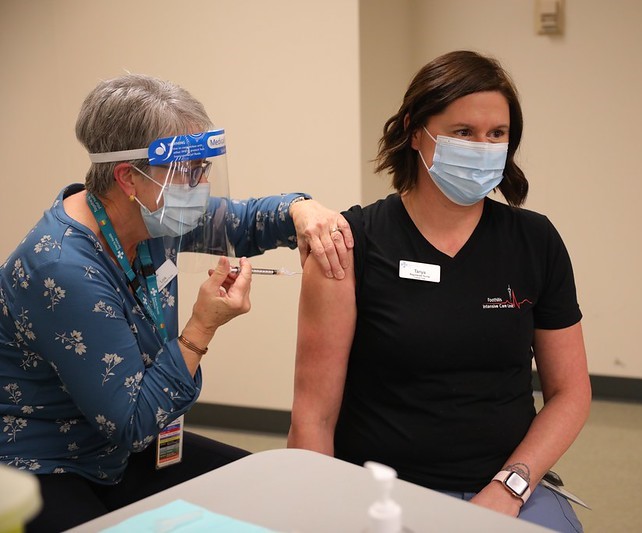
Today in Morbidity and Mortality Weekly Report, researchers published two studies on COVID-19 and flu vaccine coverage among US healthcare personnel (HCP), with one finding higher flu vaccine than COVID-19 vaccine uptake in 2023, and one suggesting that hospital workers were less likely to be vaccinated against flu during the 2020-21 and 2022-23 flu seasons than before the pandemic.
Both studies are from the same Centers for Disease Control and Prevention (CDC) research groups. The authors noted that the Advisory Committee on Immunization Practices recommends annual flu vaccination for HCP and up-to-date COVID-19 vaccination for everyone aged 6 months and older.
Up-to-date COVID vaccine uptake only 17% at hospitals
For the first study, the researchers analyzed healthcare facilities' reports of HCP vaccination against flu and COVID-19 from the CDC's National Healthcare Safety Network (NHSN) for January to June 2023. The NHSN defined up-to-date COVID-19 vaccination as receipt of one dose of a bivalent mRNA vaccine or completion of a primary series within the past 2 months.
Flu vaccine uptake was 81.0% among HCP at hospitals and 47.1% among those working at nursing homes. Up-to-date COVID-19 vaccination coverage was 17.2% among hospital HCP and 22.8% among nursing-home HCP.
There is a need to promote evidence-based strategies to improve vaccination coverage among HCP.
"There is a need to promote evidence-based strategies to improve vaccination coverage among HCP," the study authors wrote. "Tailored strategies might also be useful to reach all HCP with recommended vaccines and protect them and their patients from vaccine-preventable respiratory diseases."
Flu vaccine coverage fell amid pandemic
For the other study, the investigators used NHSN data to identify changes in flu vaccination among HCP in hospitals before and during the pandemic.
HCP flu vaccination rose before the pandemic, from 88.6% in the 2017-18 season to 90.7% in 2019-20. But amid the pandemic, the proportion of HCP vaccinated against flu fell to 85.9% in 2020–2021 and 81.1% in 2022-23.
"Additional efforts are needed to implement evidence-based strategies to increase vaccination coverage among HCP and to identify factors associated with recent declines in influenza vaccination coverage," the researchers wrote.














